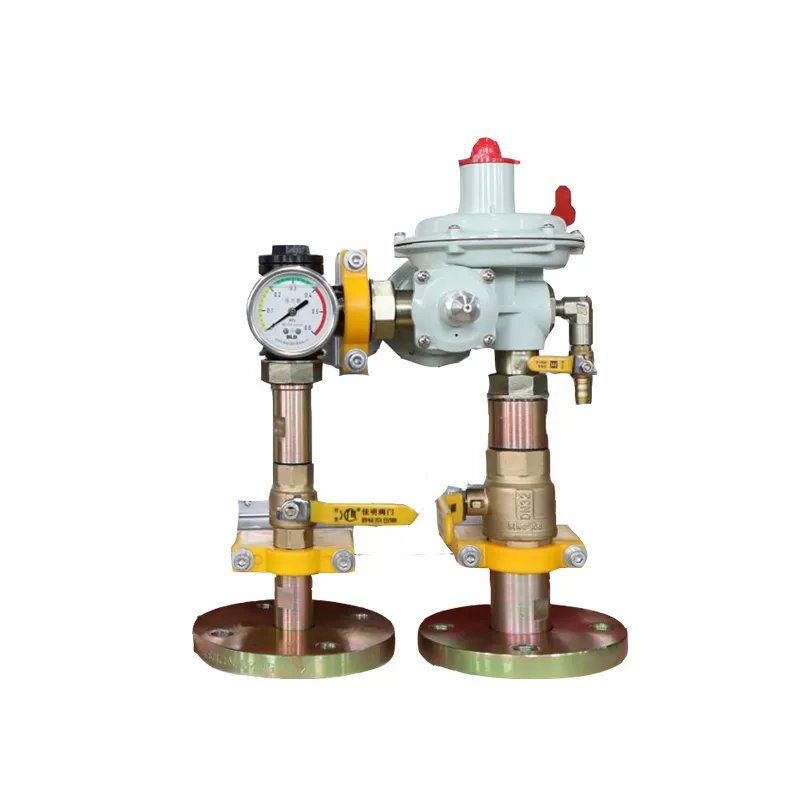
Nov . 21, 2024 19:47
Back to list
natural gas pressure reducing valve
Understanding Natural Gas Pressure Reducing Valves
Natural gas is a crucial energy source that powers homes, industries, and vehicles worldwide. However, it is delivered through complex piping systems under high pressure, making it essential to manage this pressure effectively to ensure safety and efficiency. This is where pressure reducing valves (PRVs) come into play, specifically designed to lower the pressure of natural gas before it enters end-user applications.
What is a Pressure Reducing Valve?
A pressure reducing valve is a device used in natural gas distribution systems to reduce the high pressure of gas in the supply line to a lower, manageable level suitable for consumption. These valves help maintain consistent output pressure, despite fluctuations in the incoming supply pressure, ensuring that appliances receive a stable flow of gas.
How Does It Work?
The basic functioning of a PRV involves the use of a diaphragm and a spring mechanism. The diaphragm responds to changes in pressure and controls the amount of gas flowing through the valve. When the incoming pressure exceeds the set output pressure, the diaphragm moves to close the valve partially or fully, restricting gas flow until the pressure drops to the desired level. Conversely, if the supply pressure drops, the diaphragm opens the valve to allow more gas into the system.
The adjustment of the output pressure can often be made manually or automatically, depending on the design of the valve. Manual adjustments typically involve a screw mechanism that alters the spring tension, while automatic systems may use electronic components to monitor pressure and adjust accordingly.
natural gas pressure reducing valve

Applications of Natural Gas Pressure Reducing Valves
PRVs are integral in various applications. In residential settings, they regulate pressure for domestic appliances such as stoves, water heaters, and furnaces. In commercial and industrial contexts, they are vital for equipment that requires precise gas pressure for optimal function, including boilers and industrial burners.
Furthermore, PRVs are used in gas distribution networks to safeguard the integrity of the pipeline system. By reducing pressure at critical points, these valves prevent potential leaks, hazards, and damage to downstream infrastructure.
Safety Considerations
Safety is paramount in natural gas applications, and PRVs play a significant role in ensuring that gas is delivered safely. A malfunctioning PRV can lead to excessively high pressure, posing risks such as gas leaks or explosions. Therefore, regular maintenance and testing of PRVs are necessary to ensure they function correctly and consistently. Users should also be aware of the signs of a faulty PRV, such as fluctuating gas pressure, unusual noises, or smells of gas, and report these issues immediately.
Conclusion
Natural gas pressure reducing valves are critical components that enhance the safety, efficiency, and reliability of gas distribution systems. By effectively managing and regulating pressure, these valves ensure that gas is delivered safely to homes and businesses, supporting a wide range of applications. As the demand for natural gas continues to grow, understanding the function and importance of PRVs becomes increasingly vital for consumers, engineers, and safety professionals alike. Regular maintenance, proper installation, and adherence to safety standards can prevent mishaps, making gas usage not only effective but secure for everyone involved.
Next:
Latest news
-
Safety Valve Spring-Loaded Design Overpressure ProtectionNewsJul.25,2025
-
Precision Voltage Regulator AC5 Accuracy Grade PerformanceNewsJul.25,2025
-
Natural Gas Pressure Regulating Skid Industrial Pipeline ApplicationsNewsJul.25,2025
-
Natural Gas Filter Stainless Steel Mesh Element DesignNewsJul.25,2025
-
Gas Pressure Regulator Valve Direct-Acting Spring-Loaded DesignNewsJul.25,2025
-
Decompression Equipment Multi-Stage Heat Exchange System DesignNewsJul.25,2025

